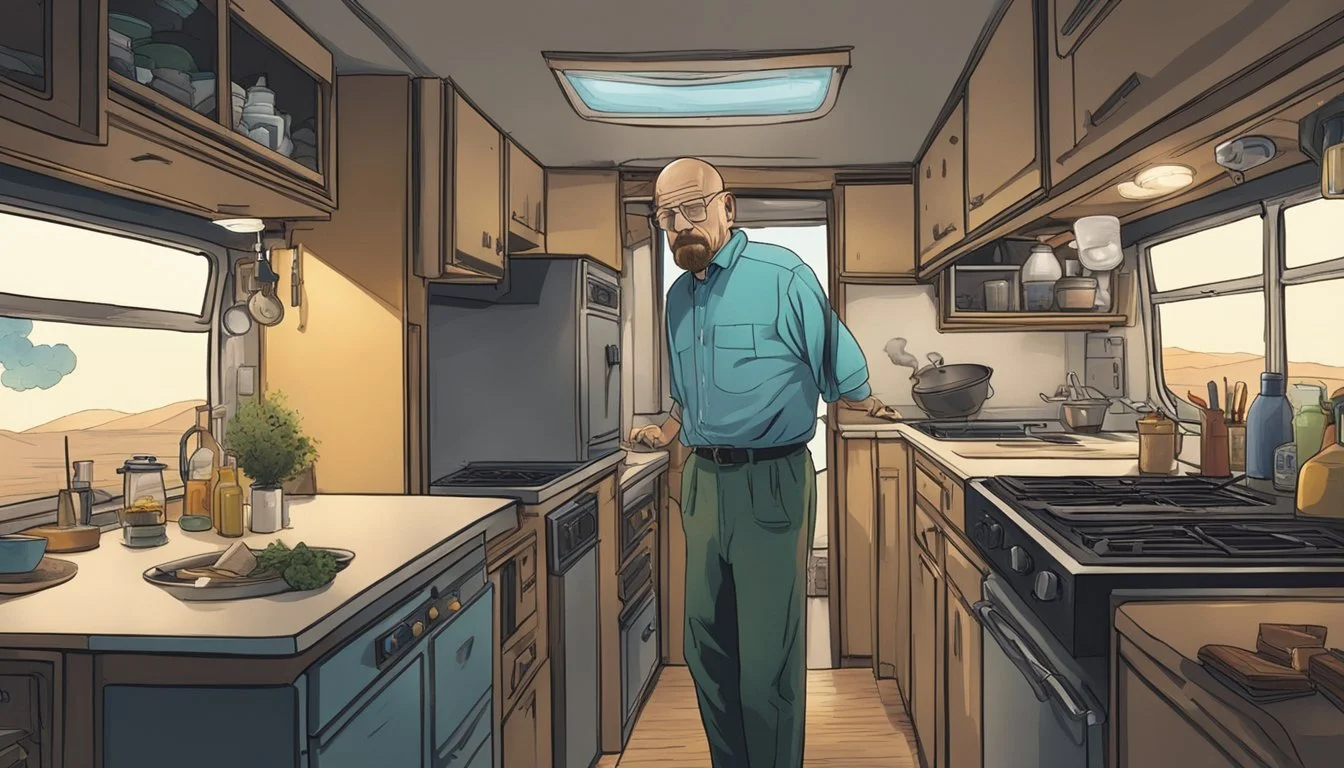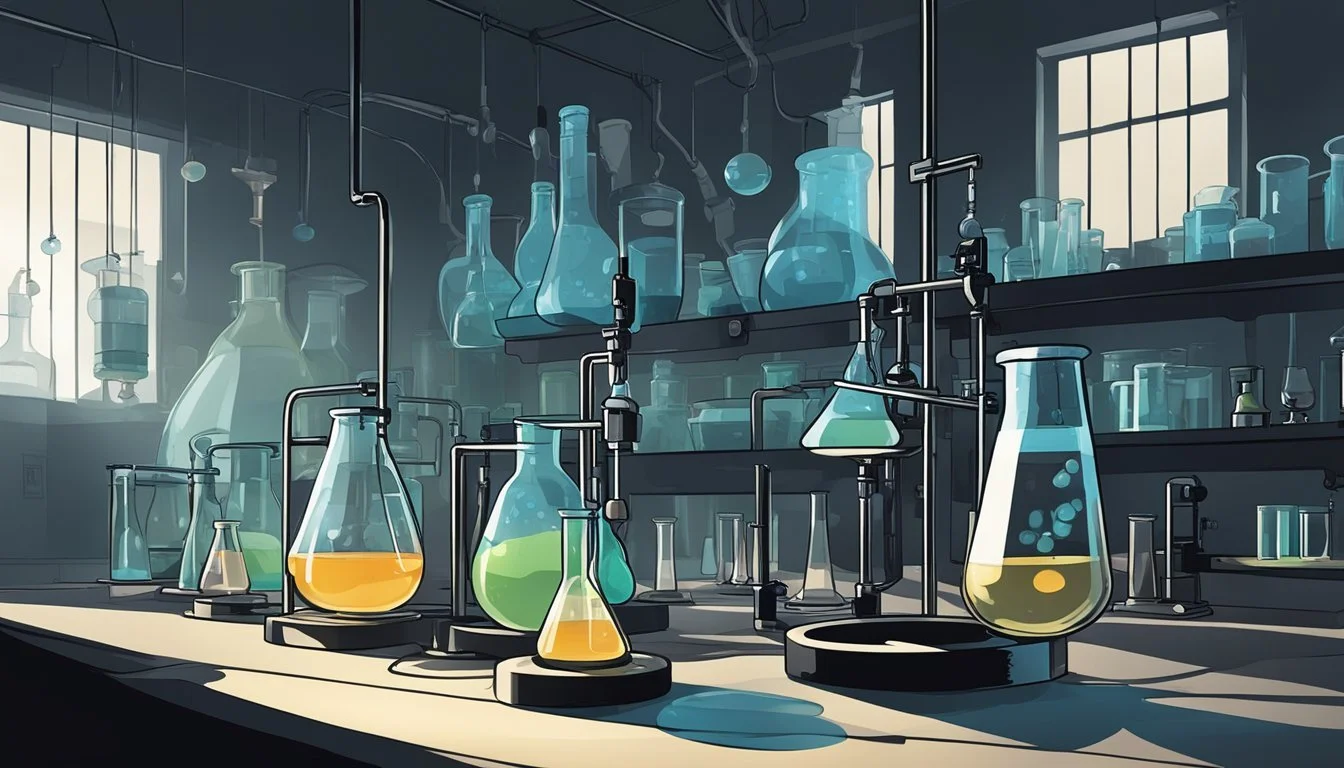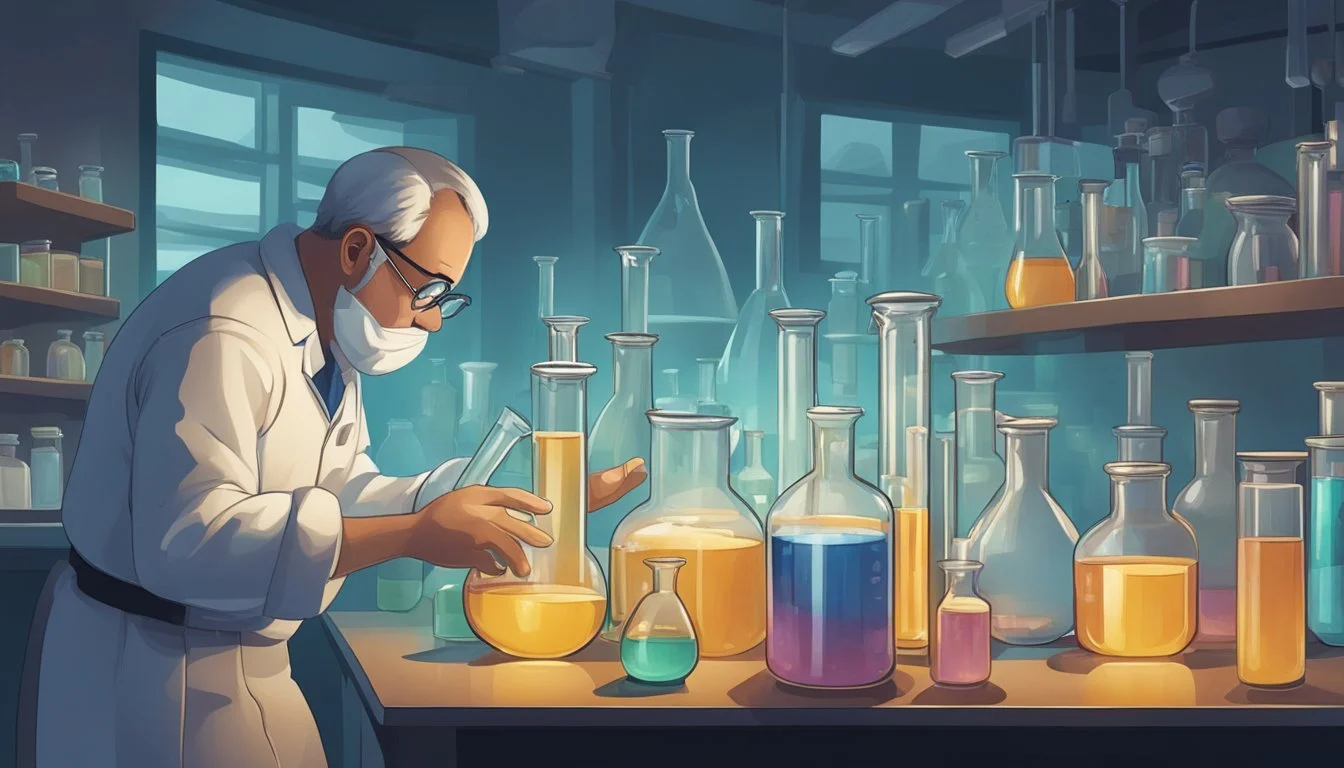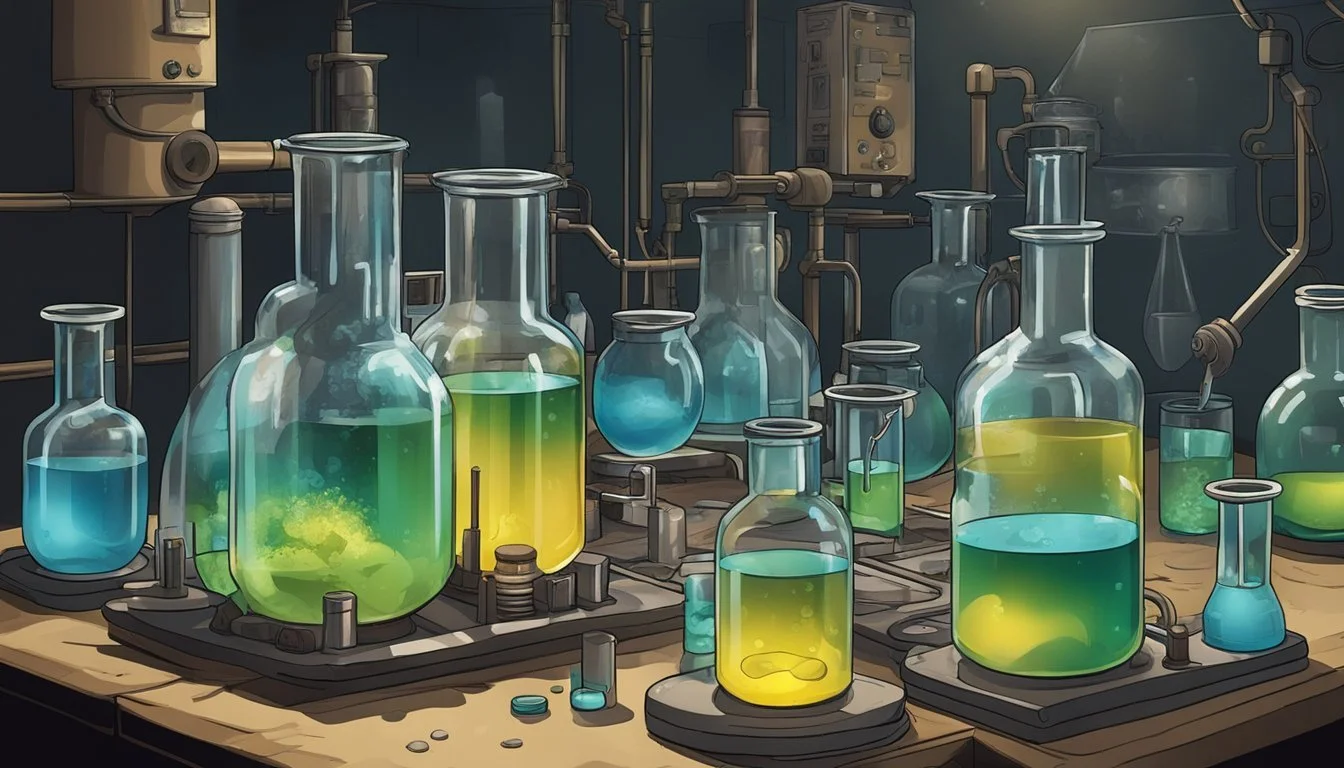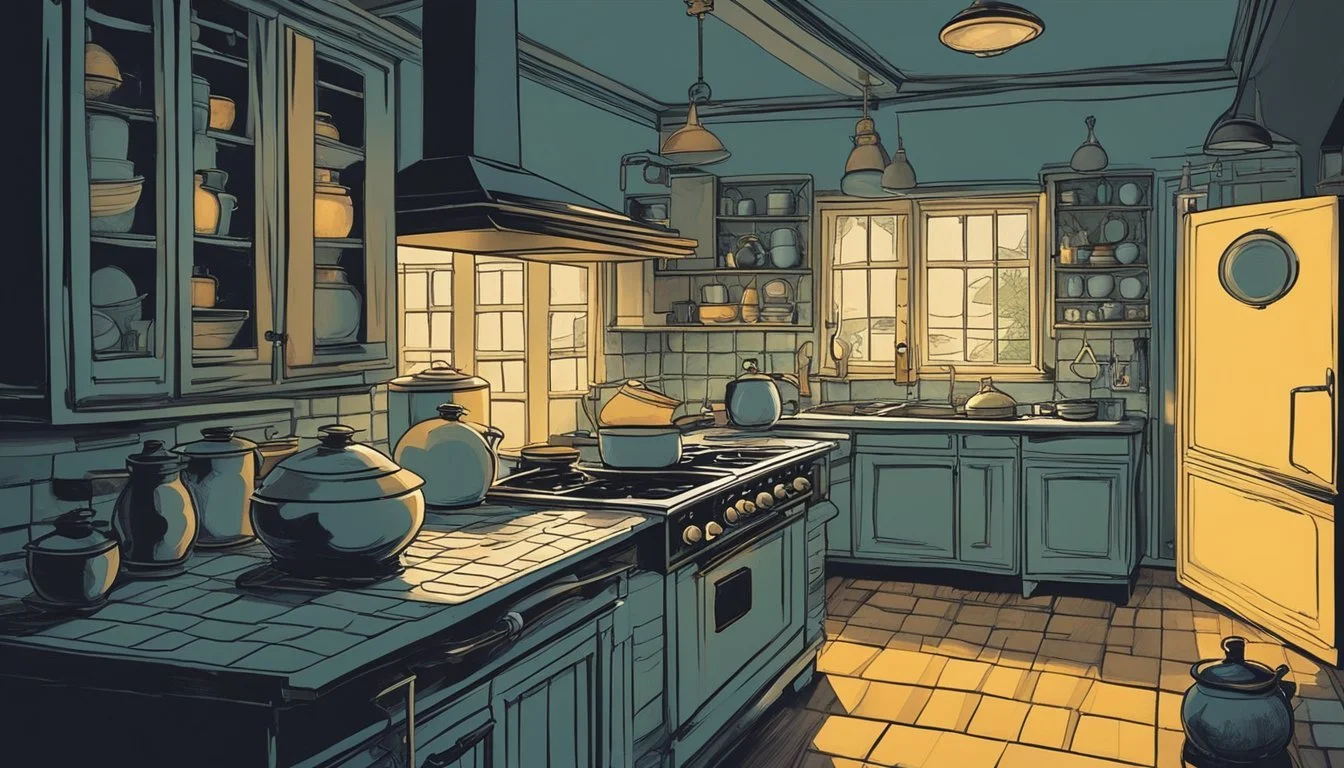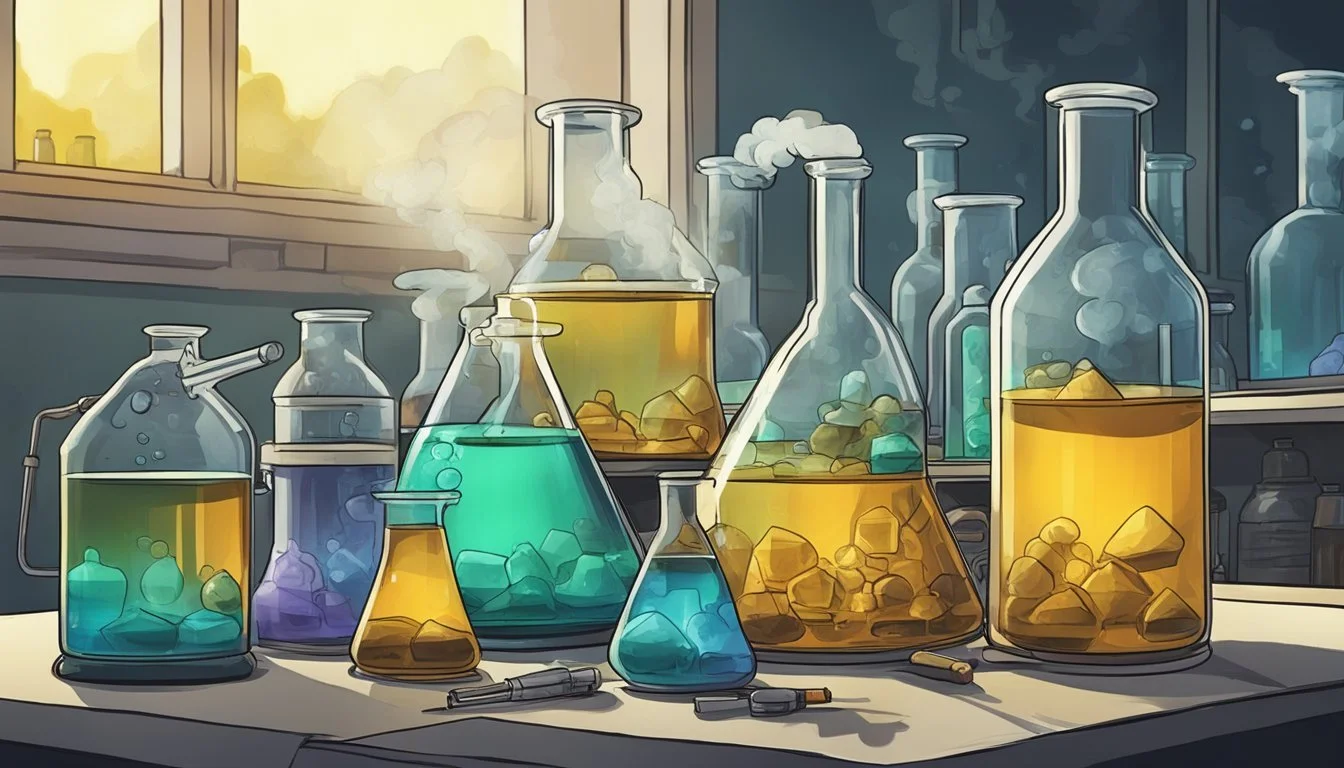Cooking Up Tension: Breaking Bad's Use of Suspense
A Study in Dramatic Storytelling
Breaking Bad revolutionized television storytelling through its masterful use of tension and suspense. The critically acclaimed series, created by Vince Gilligan, kept viewers on the edge of their seats with its intricate plot twists and morally ambiguous characters. Breaking Bad's ability to build and maintain suspense was a key factor in its success, elevating it to the status of one of the greatest TV dramas of all time.
The show's narrative structure played a crucial role in crafting its tense atmosphere. By employing flashbacks and flash-forwards, Breaking Bad created a sense of impending doom that permeated every scene. This non-linear approach to storytelling allowed the writers to tease future events while slowly revealing the consequences of past actions, keeping the audience constantly guessing.
Vince Gilligan and his team of writers expertly balanced action-packed moments with quieter, character-driven scenes to create a palpable sense of unease. The show's exploration of the moral decay of its protagonist, Walter White, added layers of psychological tension to the already high-stakes plot. Breaking Bad's unique blend of dark humor, intense drama, and unpredictable twists set a new standard for suspenseful television storytelling.
The Architect of Tension: Vince Gilligan's Vision
Vince Gilligan's creative genius shaped Breaking Bad into a masterpiece of suspense and storytelling. His innovative techniques and bold narrative choices established new standards for television drama.
Creating a Legacy in Television Storytelling
Gilligan's vision for Breaking Bad centered on character transformation and moral ambiguity. He crafted a protagonist's journey from "Mr. Chips to Scarface," exploring the consequences of choices and their ripple effects.
The show's premise emerged from a casual conversation, sparking an idea that would redefine TV drama. Gilligan's attention to detail and commitment to authenticity elevated Breaking Bad beyond typical crime narratives.
His approach to storytelling emphasized slow-burn tension and character development over constant action. This pacing allowed viewers to connect deeply with characters while building anticipation for pivotal moments.
Innovative Storytelling Techniques
Gilligan employed unique narrative devices to heighten suspense and engage viewers. The show's cold opens often foreshadowed future events or provided cryptic glimpses into characters' fates.
He utilized non-linear storytelling, jumping between timelines to reveal crucial information at strategic moments. This technique kept audiences guessing and added layers of complexity to the plot.
Visual storytelling played a key role in Gilligan's approach. Symbolic imagery, color schemes, and carefully composed shots conveyed deeper meanings and character states without relying on dialogue.
Gilligan's writing team crafted intricate plot twists that felt both surprising and inevitable. This balance of unpredictability and logical progression kept viewers on the edge of their seats throughout the series.
The Transformation of Walter White
Walter White's journey from mild-mannered chemistry teacher to ruthless drug lord Heisenberg is central to Breaking Bad's gripping narrative. This transformation explores the depths of human nature and the consequences of unchecked ambition.
Walter White to Heisenberg: A Complex Character Arc
Walter White begins as a sympathetic figure - an underachieving high school teacher facing a terminal cancer diagnosis. His initial foray into methamphetamine production stems from desperation to provide for his family.
As "Heisenberg," Walt discovers a talent for the drug trade and a thirst for power. Bryan Cranston's nuanced portrayal captures Walt's gradual embrace of his criminal alter ego.
Walt's scientific mind becomes a dangerous asset. He uses his chemistry expertise to create a superior product, outsmart rivals, and eliminate threats. His tactical thinking evolves from self-preservation to domination of the drug market.
The Interplay of Power, Ambition, and Moral Ambiguity
Walt's transformation is fueled by a complex mix of motivations. His initial noble intentions become corrupted by greed and a desire for recognition.
Power becomes intoxicating for Walt. He relishes outsmarting law enforcement and rival criminals alike. His ego grows with each successful power play in the drug world.
Moral lines blur as Walt rationalizes increasingly ruthless actions. He manipulates loved ones and orders killings, all while maintaining the illusion of being a family man.
Walt's journey raises questions about the nature of evil. Is Heisenberg a hidden part of Walt's true self, or a corruption of his fundamental character?
Jesse Pinkman's Journey and Consequences
Jesse Pinkman's character arc in Breaking Bad is marked by profound transformation and ethical challenges. His experiences shape a complex narrative of loyalty, guilt, and self-discovery.
Character Development and Empathy
Jesse Pinkman, portrayed by Aaron Paul, evolves from a small-time drug dealer to a key player in Walter White's meth empire. His journey is fraught with trauma and internal conflict. Initially brash and impulsive, Jesse develops deeper emotional layers as the series progresses.
The character's vulnerability and capacity for empathy become increasingly apparent. Jesse's relationships, particularly with children, reveal his compassionate nature. This emotional depth contrasts sharply with the brutality of the drug world he inhabits.
Jesse's struggles with addiction and loss resonate with viewers, making him a deeply sympathetic character. His attempts to break free from the cycle of violence and crime highlight the human cost of the meth business.
Ethical Dilemmas and Moral Questions
Jesse faces numerous moral quandaries throughout the series. His loyalty to Walter White becomes a source of immense psychological strain. Jesse grapples with the consequences of his actions, often finding himself torn between self-preservation and moral responsibility.
Key ethical dilemmas include:
Deciding whether to turn against Walter
Coping with guilt over deaths he's indirectly caused
Choosing between loyalty and personal safety
These moral challenges force Jesse to confront his own values and beliefs. His attempts to "break good" in a world of escalating violence and manipulation showcase the complexity of his character arc.
Jesse's journey raises questions about redemption, culpability, and the lasting impacts of one's choices. His character serves as a poignant exploration of morality in the face of extreme circumstances.
Crafting Suspense in the Methamphetamine Saga
Breaking Bad masterfully weaves suspense throughout its methamphetamine-fueled narrative. The show's creators employ key techniques to keep viewers on edge, eagerly anticipating each new development.
Rising Tension with Each Plot Development
Walter White's descent into the drug trade escalates steadily, raising the stakes with each episode. His initial foray into cooking methamphetamine quickly spirals into increasingly dangerous situations.
The introduction of volatile characters like Tuco Salamanca adds unpredictability and heightens tension. Walt and Jesse's precarious alliances with unstable partners create a constant sense of unease.
As Walt's lies compound, the threat of discovery looms larger. His double life strains relationships, especially with Skyler and Hank, amplifying viewers' anxiety.
The show expertly balances moments of intense action with slower scenes of mounting dread. This pacing keeps the audience in a state of sustained suspense, never knowing when the next crisis will erupt.
Anticipation through Foreshadowing and Time Jumps
Breaking Bad's use of foreshadowing plants seeds of future conflicts, building anticipation. Subtle hints and seemingly innocuous details often have major payoffs later in the series.
The iconic teddy bear in the pool, shown in cryptic flash-forwards, creates mystery and foreboding. These glimpses of future events leave viewers speculating about the impending disaster.
Time jumps accelerate plot momentum and create narrative gaps. The audience must piece together what transpired during these unseen periods, heightening engagement and suspense.
The show's cold opens frequently employ misdirection or out-of-context scenes. These intriguing snippets spark curiosity and set a tense tone for the episodes that follow.
The Visual Language of Breaking Bad
Breaking Bad employs a rich visual language to enhance its storytelling. The show's creators crafted a distinct aesthetic that communicates character development, themes, and mood through carefully chosen colors, symbols, and imagery.
Symbolism Through Color and Imagery
Breaking Bad's color palette plays a crucial role in conveying meaning. Walt's transformation is reflected in his wardrobe, shifting from beige to darker tones as he embraces his Heisenberg persona. Green represents greed and money, appearing frequently in scenes involving drug deals or financial discussions.
Blue symbolizes purity and chemistry, seen in the distinctive color of Walt's methamphetamine. The stark New Mexico desert serves as a visual metaphor for moral decay and isolation. Wide-angle shots emphasize characters' vulnerability in this harsh landscape.
Lighting techniques create visual tension. Harsh shadows and high-contrast scenes underscore moments of conflict or moral ambiguity. Softer lighting is used for rare moments of normalcy or connection between characters.
Iconic Symbols and the Pink Teddy Bear
The pink teddy bear stands as one of Breaking Bad's most memorable visual motifs. First appearing as debris from a plane crash, it becomes a haunting symbol of innocence lost and the far-reaching consequences of Walt's actions.
Other recurring symbols include:
Hazmat suits: Representing Walt's dual identity
RV: Symbol of Walt and Jesse's partnership
Walt's pork pie hat: Signifying his Heisenberg alter ego
These visual elements create a cohesive symbolic language throughout the series. They reinforce themes of duality, corruption, and the ripple effects of choices made.
The show's cinematography employs unique perspectives, such as POV shots from inanimate objects, to create disorienting and memorable visuals. This approach keeps viewers engaged and emphasizes key story beats without relying on dialogue.
Key Figures in Walt's Empire
Walt's rise to power involved several influential characters who shaped his journey and the series' narrative. These key players added depth and complexity to the story through their unique roles and relationships with Walt.
Gustavo Fring: The Pinnacle of Control and Success
Gustavo Fring epitomized the successful drug lord Walt aspired to become. His meticulous planning and facade as a legitimate businessman made him a formidable adversary. Fring's Los Pollos Hermanos chain served as the perfect cover for his expansive meth empire.
He maintained strict control over his operation through fear and manipulation. Fring's calm demeanor masked a ruthless nature, allowing him to eliminate threats swiftly and efficiently. His calculated approach to the drug trade set a high bar for Walt to overcome.
Hank Schrader and the Pursuit of Justice
As Walt's brother-in-law and a DEA agent, Hank Schrader represented the constant threat of discovery. His dogged pursuit of "Heisenberg" added a layer of tension to Walt's criminal activities. Hank's investigation brought him dangerously close to uncovering Walt's secret life on multiple occasions.
Hank's dedication to his job and family created a compelling dynamic with Walt. Their relationship became increasingly strained as Walt's crimes escalated. Hank's role highlighted the moral conflict at the heart of the series.
Saul Goodman and the Complexity of Loyalty
Saul Goodman, the colorful criminal lawyer, played a crucial role in Walt's operation. His legal expertise and underworld connections proved invaluable to Walt's criminal enterprise. Saul's ability to navigate complex situations often saved Walt from dire consequences.
Despite his comical facade, Saul demonstrated a keen understanding of the criminal world. His loyalty to Walt was tested repeatedly as the stakes grew higher. Saul's character added both comic relief and strategic depth to the series.
Influences and Parallels in Pop Culture
Breaking Bad's impact extends far beyond its original run, reshaping television drama and popular culture. The show's innovative storytelling and complex characters continue to influence modern entertainment.
Breaking Bad and Its Impact on the Television Landscape
Breaking Bad revolutionized TV dramas with its intricate plot and morally ambiguous characters. The show raised the bar for storytelling, inspiring other series to take bolder creative risks. Its non-linear narratives and use of flashforwards created a new standard for building tension.
The series popularized the concept of the antihero protagonist, paving the way for more complex lead characters in television. Breaking Bad's success also contributed to the rise of binge-watching culture, as viewers eagerly consumed multiple episodes in single sittings.
The show's legacy lives on through successful spin-offs like Better Call Saul, further expanding its universe and impact on the television landscape.
Comparisons with Other Icons like Game of Thrones
Breaking Bad and Game of Thrones share several parallels as groundbreaking television series. Both shows captivated audiences with their high production values, intricate plotlines, and morally complex characters.
While Game of Thrones relied on epic fantasy, Breaking Bad's gritty realism brought a different kind of tension to the small screen. Both series became cultural phenomena, generating endless discussions, theories, and memes across social media platforms.
The two shows also demonstrated the power of serialized storytelling, with each episode building towards larger narrative arcs. Their success helped solidify the idea that television could rival cinema in terms of storytelling scope and production quality.
Behind the Scenes: The Craftsmanship of the Series
Breaking Bad's masterful suspense was the result of exceptional talent behind the camera. The show's creators and crew employed innovative techniques to keep viewers on the edge of their seats.
Michelle MacLaren's Directorial Brilliance
Michelle MacLaren directed some of Breaking Bad's most intense episodes. Her unique visual style and attention to detail elevated the show's tension. MacLaren used creative camera angles and meticulous shot composition to heighten suspense.
She often employed long takes and wide shots to build anticipation. Her work on episodes like "4 Days Out" and "Gliding Over All" showcased her ability to create palpable tension through pacing and framing.
MacLaren's collaborations with the cast brought out nuanced performances that added depth to tense scenes. Her directorial choices consistently amplified the show's nail-biting atmosphere.
Tension and Suspense in 'Dead Freight' and 'Say My Name'
"Dead Freight" stands out as a masterclass in suspense-building. The episode's train heist sequence kept viewers in a constant state of unease. Careful editing and sound design ratcheted up the tension with each passing moment.
The writers crafted a scenario where multiple threats converged, leaving audiences guessing until the very end. The episode's shocking conclusion demonstrated the show's commitment to unpredictable storytelling.
"Say My Name" similarly excelled in creating suspense through dialogue and character dynamics. The confrontation between Walt and Mike in the desert was a study in verbal tension. Each line of dialogue carried weight, with the threat of violence always lurking beneath the surface.
Excellence in Editing, Cinematography, and Dialogue
Breaking Bad's editors played a crucial role in crafting suspense. Their precise cuts and timing choices maximized the impact of tense moments. They often used quick cuts to disorient viewers during action sequences.
The show's cinematography was equally important in building tension. Low-angle shots made characters appear more menacing. Time-lapse sequences conveyed the passage of time while maintaining a sense of unease.
Breaking Bad's dialogue was sharp and purposeful. Writers crafted lines that revealed character motivations while keeping audiences guessing. The supporting cast delivered these lines with conviction, adding layers to already tense situations.
Themes and Messages
Breaking Bad's thematic depth explores the consequences of crime and the lasting impact on characters' lives. The show delves into moral decay, power, and legacy through its narrative choices and character arcs.
Exploring the Consequences of a Life in Crime
Walter White's transformation from mild-mannered teacher to ruthless drug lord illustrates the corrupting influence of power. His initial justification of providing for his family quickly unravels as he becomes consumed by greed and ego. The series portrays the devastating effects of the meth trade on individuals, families, and communities.
Breaking Bad uses dark humor to underscore the absurdity of Walter's situation. This tonal choice heightens tension while providing moments of levity. The show doesn't shy away from depicting violence and its aftermath, forcing viewers to confront the brutal reality of the criminal underworld.
Legacy and the Enduring Effects on Characters
The concept of legacy looms large throughout Breaking Bad. Walter's obsession with building an empire stems from a desire to leave a mark on the world. His actions ripple outward, forever altering the lives of those around him.
Jesse Pinkman's journey highlights the difficulty of escaping one's past. Despite attempts to reform, he finds himself pulled back into a life of crime. The show explores how choices made under duress can haunt characters long after the immediate danger has passed.
Supporting characters like Skyler and Hank grapple with the fallout of Walter's decisions. Their arcs demonstrate how one person's actions can irrevocably change entire families and social circles.
The Cultural Footprint of Breaking Bad
Breaking Bad left an indelible mark on television and popular culture. The show's gripping narrative and complex characters captured audiences worldwide, elevating it to cult status.
Albuquerque, the setting of Breaking Bad, experienced a tourism boom. Fans flocked to iconic locations featured in the series, from Walter White's house to Los Pollos Hermanos.
The show's influence extended to fashion and merchandise. Heisenberg hats and blue rock candy became popular items, cementing Breaking Bad's place in pop culture iconography.
Breaking Bad's legacy includes inspiring a successful spin-off, Better Call Saul. This prequel further expanded the show's universe and garnered critical acclaim in its own right.
The series' impact on television storytelling cannot be overstated. It raised the bar for character development and plot complexity, influencing subsequent dramas.
Breaking Bad's cultural footprint is evident in its continued relevance years after its finale. References to the show persist in media, memes, and everyday conversations.
Key elements of Breaking Bad's cultural impact:
Increased tourism in Albuquerque
Popularized anti-hero protagonists
Inspired merchandise and fashion trends
Influenced modern television storytelling
Spawned successful spin-off series



